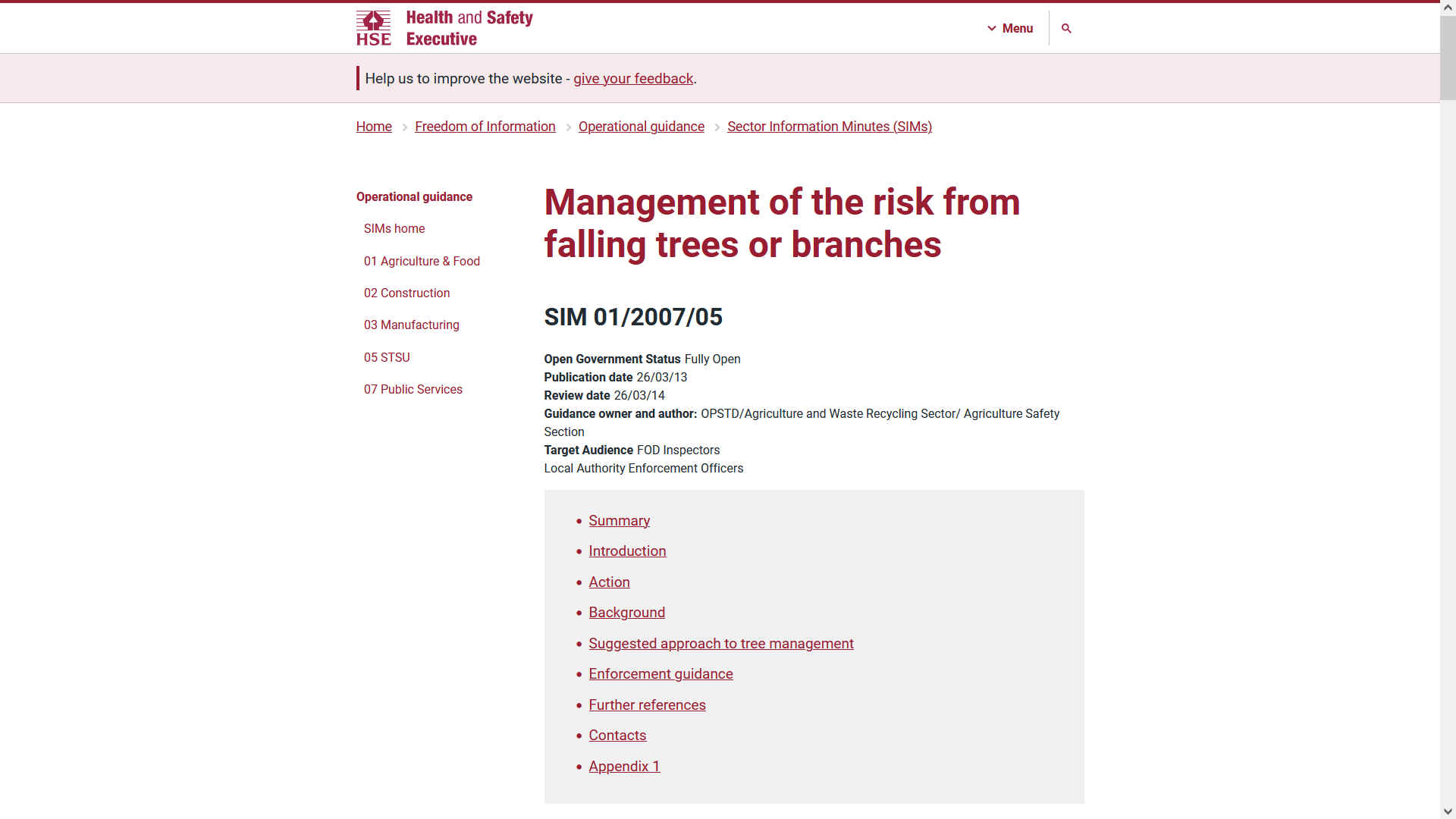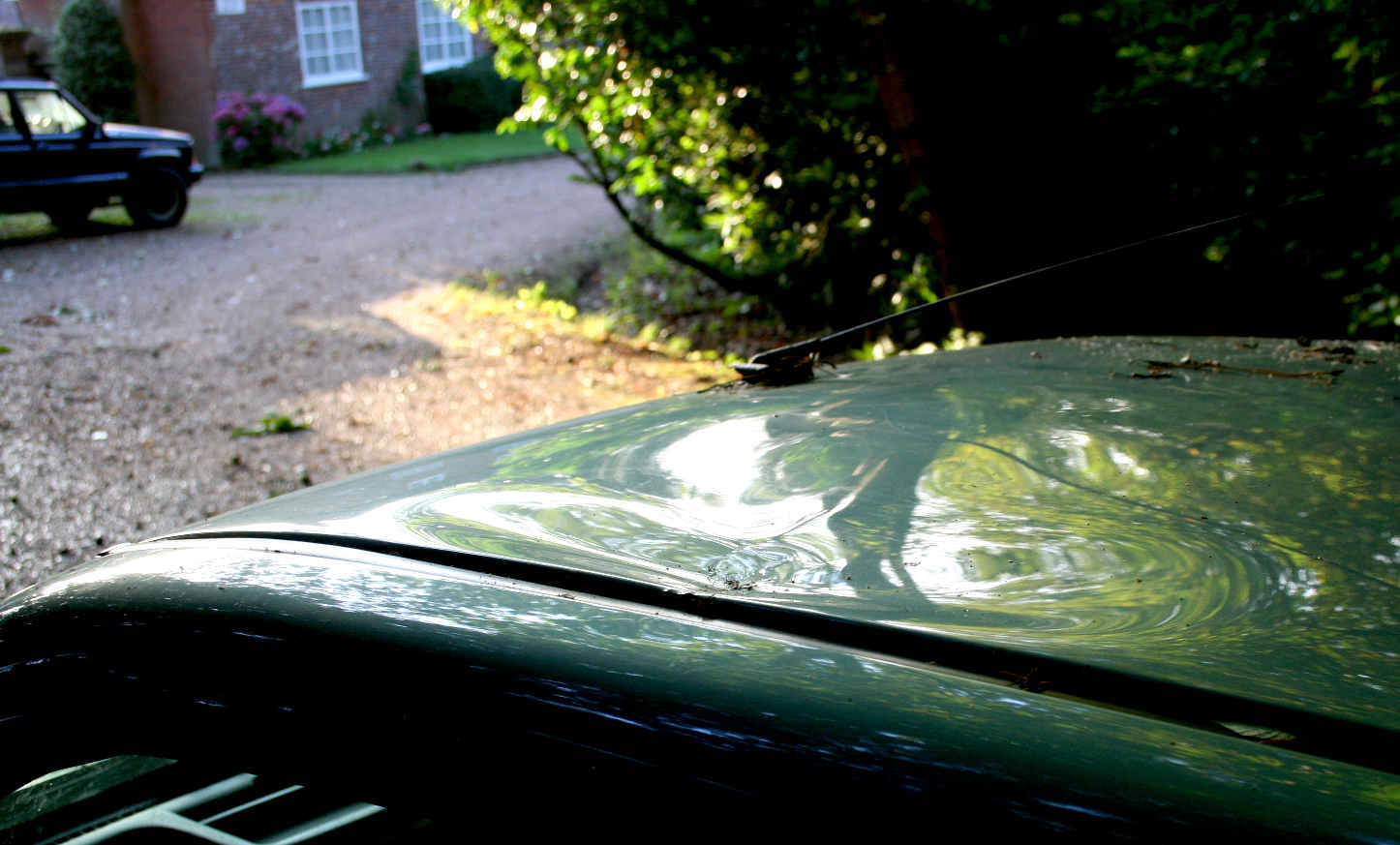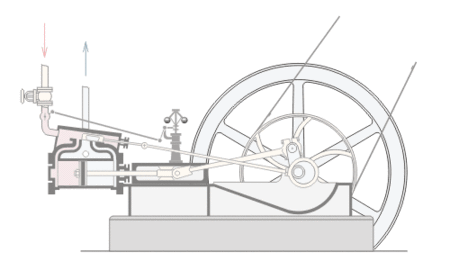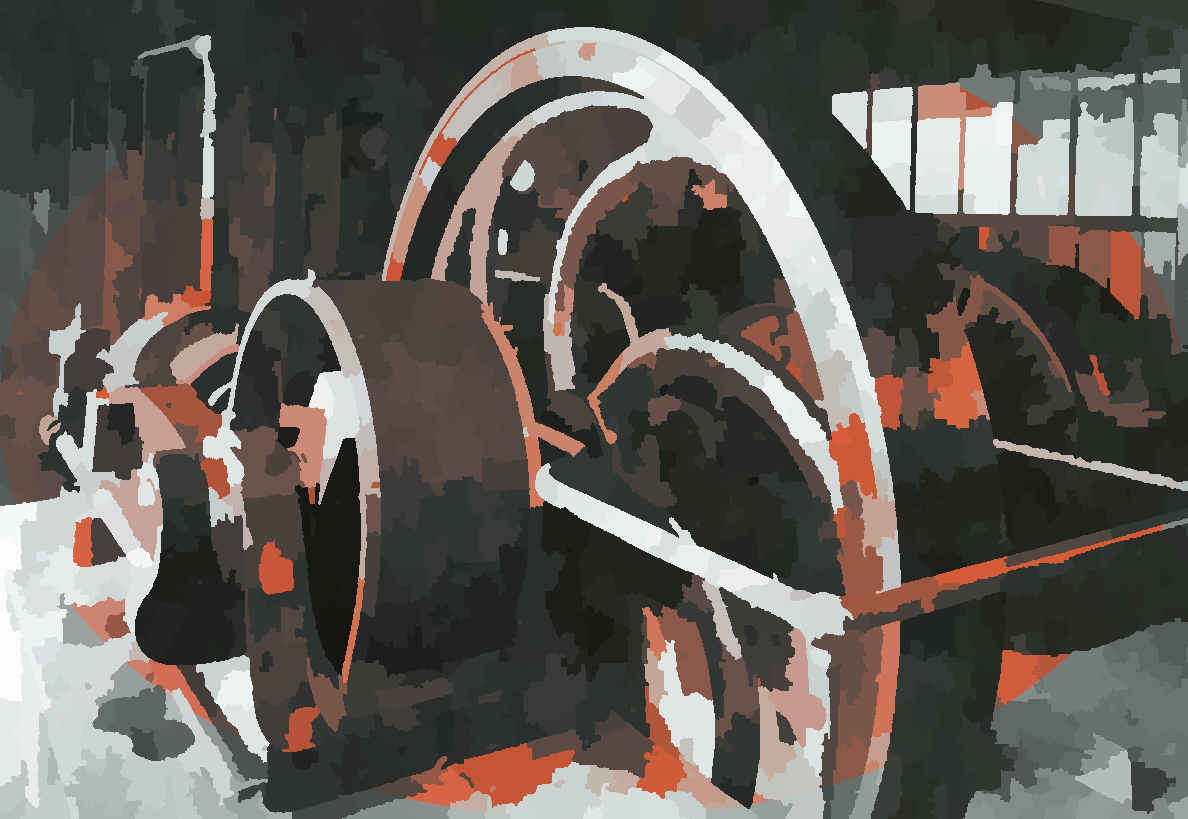Herstmonceux
Museum consider that they have a duty to protect the public and employees from falling
branches from adjacent and overhead trees including oak, scots pine,
sycamore, holy and other species locally. Especially in high winds. Of
which the region is prone, especially where climate change often sends
very strong and sudden gusts to the area, typically across the fields to
the west. We measured gust of 60 mph and more a few years ago.
The
Museum has noted a long history of falling trees and
branches in and around Lime Park.
Accordingly, roofs (or alternative protections) need to be installed and
maintained where visitors are likely to walk under trees that shed
branches, including falling ivy, pine cones, etc.
In
the case of the Museum proper, as in the electricity
generating
station,
this will not be open to the public in 2024, or until further notice,
but the Innovation Hub is open when requested by visiting members of the
public.
Thus is not included in any assessment that includes other attractions
and exhibits for public viewing on the published open
days. Pending work to restore these sections, as part of our published plan as
a potential UNESCO
heritage asset.
At
present, it is unclear who has the responsibility concerning falling
branches and trees. The Crown, local authority, or East Sussex County
Council. It is also unclear what
measures should be incorporated by responsible persons. As in what form
is acceptable in terms of visual amenity in the country. Be advised that
we are seeking assistance from the Secretary of State (SOS) regarding
this matter. Where we understand that the SOS may give guidance, and
where the High Court may be the final arbiter in the UK. With the
European Court, a potential recourse where injustice in Human Rights
terms may become an unresolved issue.
Visitors
who arrive by car are advised not to park in Lime Park. Please see the
suggested parking
arrangements. It is better to walk a few hundred yards from the
village, than risk your vehicle. All vehicles parked in Lime Park are at
the owners risk. No claims to damage or injury arising from parking in
the Park will be entertained.

MANAGEMENT
OF RISK FALLING TREES/BRANCHES SIM 01/2007/05 HEALTH & SAFETY
EXECUTIVE (REVIEWED 2011)
Open Government Status: Fully Open
Publication date: 26/03/13
Review date: 26/03/14
Guidance owner and author: OPSTD/Agriculture and Waste Recycling Sector/ Agriculture Safety Section
TARGET AUDIENCE
- FOD Inspectors
- Local Authority Enforcement Officers
SUMMARY
This document provides guidance for HSE Inspectors and LA Enforcement Officers on:
- the standards for managing the risk from trees, including risk assessment and where appropriate, routine checks by a competent person. Duty holders should have such systems in place to control risks from trees to their employees, contractors and members of the public.
- handling these issues and approaching enforcement decisions in accordance with the principles and expectations of the HSE Enforcement Policy Statement (EPS)
INTRODUCTION
This guidance is aimed specifically at duties under Section 3 Health and Safety at Work etc Act 1974 (HSW Act) and should be read in conjunction with HSE's Section 3 guidance , Investigation operational procedure, EPS and Work- related death protocol (WRDP).
See also situational example 18 in the document Guidance for FOD in responding to (non-construction) public safety incidents where Section 3 of HSWA applies (PDF) .
A good deal of relevant guidance has been produced by various organisations, including the National Tree Safety Group, the Arboricultural Association and the Forestry Commission. Their guidance provides advice to help duty holders comply with the Occupiers Liability Acts and other legislation and it may also be helpful to investigating inspectors. However, it should be noted that it represents 'best practice' guidance for managing trees, not the minimum standard required by Section 3 HSW Act as outlined above.

This
is a picture taken in Lime Park the day after the branch fell on the
unfortunate Nissan Micra, seen here with roof bashed out, though still
somewhat dented. See picture below.
ACTION
If Inspectors are called upon to examine standards of tree management following an incident, or if they identify a matter of evident concern during a visit, they should base their approach to deciding whether to investigate on HSE's general guidance on Section 3 HSW Act, HSE's operational guidance on Section 3 enforcement and the additional advice and guidance in this document. Any enforcement action should be taken in accordance with the HSE EPS.
Proactive inspection of duty holders' systems for tree management is not envisaged.
BACKGROUND
WHAT IS THE RISK?
Each year between 5 and 6 people in the UK are killed when trees or branches fall on them. Around 3 people are killed each year by trees in public spaces. Thus the risk of being struck and killed by a tree or branch falling is extremely low (in the order of one in 10 million for those trees in or adjacent to areas of high public use). However the low level of overall risk may not be perceived in this way by the public, particularly following an incident.
The average risk is firmly in the "broadly acceptable" region of the tolerability of risk triangle published in HSE's "Reducing Risks Protecting People". However, "Reducing Risks, Protecting People" explicitly states that "broadly acceptable" is a general guide and not a definitive statement of what is reasonably practicable in law.
What is required?
Employers and persons carrying out undertakings or in control of premises all have duties under the HSW Act. In particular, there is the duty to do all that is reasonably practicable to ensure that people are not exposed to risk to their health and safety.
Doing all that is reasonably practicable does not mean that all trees have to be individually examined on a regular basis. A decision has to be taken on what is reasonable in the circumstances and this will include consideration of the risks to which people may be exposed.
Around half of all fatalities due to falling trees or branches occur in public spaces, such as a park or beside roads, so Section 3 HSW Act may be applicable. Whilst HSE may regard the average risk as extremely low, the law requires that where reasonably practicable measures are available, in individual cases, they should be taken. Whilst the risk of such incidents puts them outside HSE's and LAs main proactive priorities, inspectors may be called upon to investigate serious incidents, including fatalities.

This
is a picture taken in Lime Park the day after the branch fell on the
unfortunate Nissan Micra, seen here with the roof somewhat bashed. See
pictures above on this vehicle cleared of the offending branch, and as
it was hit the night before. For sure if that branch had hit anyone,
they might have been killed. For this reason, Herstmonceux Museum take
their responsibilities to workers and visitors, very seriously.
OTHER LEGISLATION
In addition to duties under the HSWA there are a number of reasons why LAs (as duty holders) and others may want to manage their tree stocks, for example responsibilities under other legislation and the risk of civil liabilities to:
- reduce the risk of property damage from subsidence;
- maintain stocks to preserve their amenity, conservation, and environmental value;
- prevent personal injury through trips and falls on footways disturbed by tree roots; and
- prevent vehicle damage and personal injury from obscured sightlines on the highway.
For these and other reasons, some duty holders may undertake inspection of trees
beyond the reasonably practicable requirements of the HSW Act.
Other legislation relevant to the management of trees includes, for example the Occupiers' Liability Acts 1957 and 1984, Occupiers Liability Act (Scotland)1960, Land Reform (Scotland) 2003, the Countryside and Rights of Way Act 2000 (CRoW), the Wildlife and Countryside Act 1981, the Marine and Coastal Access Act 2009, as well as legislation relating to Sites of Special Scientific Interest, planning issues and Tree Preservation Orders.
SUGGESTED APPROACH TO TREE MANAGEMENT
Details of a suggested simple tree management system are given in Appendix 1.
ENFORCEMENT GUIDANCE
Enforcement may be appropriate following an incident or investigation of a complaint and should be in accordance with HSE's EPS and with HSE's Enforcement Management Model (EMM). In particular, consideration should be given as to how far the duty holder fell below what could reasonably be expected in the circumstances. This should be informed by the broad approach outlined above and factors such as:
- the frequency of public access to the tree;
- the existence of a system for managing trees based on the level of risk;
- the implementation of the system in practice, including a procedure to act on issues of concern, for example, reports of structural faults;
- the need to comply with other legislation eg the Wildlife and Countryside Act, Tree Preservation Orders etc.
Such legislation generally allows that trees in a dangerous condition may be felled. However, a specific check should be made before considering enforcement action.
Consideration should also be given to the risks to persons that arise from the failings of the duty holder, along with the factors set down in paragraph 39 of the EPS. Of particular relevance will be any history of previous incidents in the area managed by the duty holder and any previous advice or enforcement in relation to the duty holder.
For the purposes of the EMM, this operational guidance should be considered 'established' guidance. The benchmark, based on duties under HSW Act is a 'remote' risk of 'serious personal injury.
Inspectors should seek advice from the Agriculture and Waste and Recycling Sector, the Entertainment, Leisure and Consumer Services Sector or the Central and Local Government, Education and Research Sector, as appropriate, before issuing an improvement notice or considering prosecution.

This
is a picture of a dangerous Sycamore tree fallen into the adjacent field
(Lime Cross) from lands adjacent to Herstmonceux Museum in October 2014.
This tree was also included in a Tree Preservation Order by the local
authority in 1983. All the large Sycamores in close proximity to the
Heritage asset have been removed. Including this one. Please note that
when considering lopping or removal of weed trees, you should contact
your Local Authority (LA) to be sure of obtaining any necessary
permissions. There is an appeal process if the LA refuses to be
reasonable, in which case compensation is payable to the applicant.
FURTHER REFERENCES
National Tree Safety Group, comprising key industry stakeholders, has produced guidance on trees and public safety.
The Health and Safety Executive was consulted in the production of these publications and endorses the sensible, proportionate, reasonable and balanced advice to owners on managing the risk from trees set out in the guidance.
- Common sense risk management of trees - landowner summary - Forest Research
- Common sense risk management of trees - Forest Research
- Arboricultural Association Guidance Note 7: Tree Surveys A Guide to Good Practice
- Arboricultural Association: The Malthouse, Stroud Green, Standish, Stonehouse, Gloucestershire, GL10 3DL
- Hazards from
trees: a general guide - Forest Research
- Managing Visitor Safety in the Countryside: principles and practice -
Visitor Safety Group
CONTACTS
OPSTD, Agriculture and Waste Recycling Sector Agricultural Safety Section, HSE Nottingham.
APPENDIX 1
Given the large number of trees in public spaces across the country, control measures that involve inspecting and recording every tree would be disproportionate to the risk. Individual tree inspection is only likely to be necessary in specific circumstances, for example, where a particular tree:
- is in a place frequently visited by the public;
- has been identified, for example, as having structural faults that are likely to make it unstable; and
- a decision has been made to retain it with these faults.
Public safety aspects can be addressed by tree owners as part of their approach to managing tree health. A sensible approach will ensure the maintenance of a healthy tree stock, the sound management of the environment and will usually satisfy health and safety requirements.
An effective system for managing trees should meet the requirements set out in the Management of Health and Safety at Work Regulations 1999 and the associated ACOP (guidance is contained in HSG 65 Successful health and safety management and INDG 163 Five steps to risk assessment). Such a system is likely to address the following:
- An overall assessment of risks from trees - identifying groups of trees by their position and degree of public access. This will enable the risks associated with tree stocks to be prioritised, and help identify any checks or inspections needed.
-
There are several approaches to managing the risks from trees that involve 'zoning' trees according to the risk of them falling and causing serious injury or death. As a minimum, trees should be divided into two zones:
ZONE ONE - where there is frequent public access to trees (eg parks/ recreation grounds, in and around picnic areas, schools, children's playgrounds, popular foot paths, car parks, or at the side of busy roads). As a rough guide trees in Zone 1 are those that are closely approached by many people every day.
ZONE TWO - where trees are not subject to frequent public access.
- In most case individual records for trees are unlikely to be necessary if zones and the trees in the zones are clearly defined - maps may be useful here.
- For trees in a frequently visited zone, a system for periodic, proactive checks is appropriate. This should involve a quick visual check for obvious signs that a tree is likely to be unstable and be carried out by a person with a working knowledge of trees and their defects, but who need not be an arboriculture specialist. Informing staff who work in parks or highways as to what to look for would normally be enough.
- Any system that is put in place for managing tree safety should be properly applied and monitored, including:
- A short record of when an area or zone or occasionally an individual tree has been checked or inspected with details of any defects found and action taken.
- A system for obtaining specialist assistance / remedial action when a check reveals defects out with the experience and knowledge of the person carrying out the check.
- A system to enable people to report damage to trees, such as vehicle collisions, and to trigger checks following potentially damaging activities such as work by the utilities in the vicinity of trees or severe gales.
- Procedures for ensuring the safety of the public during high winds, for example, where practicable by closing or restricting access to parks and gardens or footpaths.
- Monitoring to ensure that the arrangements are implemented in practice.
Occasionally a duty holder may have responsibility for trees that have, for example, serious structural faults but which they decide to retain. Where such a condition is suspected and the tree also poses a potentially serious risk because, for example, its proximity to an area of high public use, a specific assessment for that tree and specific management measures, are likely to be appropriate.
Once a tree has been identified by a check to present an elevated risk, action should be planned and taken to manage the risk. Any arboriculture work required should be carried out by a competent arboriculturist as such work tends to present a relatively high risk to the workers involved.
Inspection of individual trees will only be necessary where, for example, a tree is in, or adjacent to, an area of high public use, has structural faults that are likely to make it unstable and a decision has been made to retain the tree with these faults.
HEALTH
& SAFETY AT WORK ETC. ACT 1974
3 [F1] General duties of employers and self-employed to persons other than their employees.
(1) It shall be the duty of every employer to conduct his undertaking in such a way as to ensure, so far as is reasonably practicable, that persons not in his employment who may be affected thereby are not thereby exposed to risks to their health or safety.
(2) It shall be the duty of every self-employed person [F2] who conducts an undertaking of a prescribed description] to conduct
[F3 the undertaking] in such a way as to ensure, so far as is reasonably practicable, that he and other persons (not being his employees) who may be affected thereby are not thereby exposed to risks to their health or safety.
[F4] (2A) A description of undertaking included in regulations under subsection (2) may be framed by reference to
(a) the type of activities carried out by the undertaking, where those activities are carried out or any other feature of the undertaking;
(b) whether persons who may be affected by the conduct of the undertaking, other than the self-employed person (or his employees), may thereby be exposed to risks to their health or safety.]
(3) In such cases as may be prescribed, it shall be the duty of every employer and every self-employed person, in the prescribed circumstances and in the prescribed manner, to give to persons (not being his employees) who may be affected by the way in which he conducts his undertaking the prescribed information about such aspects of the way in which he conducts his undertaking as might affect their health or safety.
TEXTUAL AMENDMENT
F1S. 3(2) amendment to earlier affecting provision S.I. 2002/2677, reg. 20 (1.10.2015) by The Deregulation Act 2015 (Health and Safety at Work) (General Duties of Self-Employed Persons) (Consequential Amendments) Order 2015 (S.I. 2015/1637), art. 1, Sch. para. 7(3)
F2Words in s. 3(2) inserted (26.3.2015 for specified purposes, 1.10.2015 in so far as not already in force) by Deregulation Act 2015 (c. 20), ss. 1(2)(a), 115(2)(a) (with s. 1(6)); S.I. 2015/1732, art. 2(a)
F3Words in s. 3(2) substituted (26.3.2015 for specified purposes, 1.10.2015 in so far as not already in force) by Deregulation Act 2015 (c. 20), ss. 1(2)(b), 115(2)(a) (with s. 1(6)); S.I. 2015/1732, art. 2(a)
F4S. 3(2A) inserted (26.3.2015 for specified purposes, 1.10.2015 in so far as not already in force) by Deregulation Act 2015 (c. 20), ss. 1(3), 115(2)(a) (with s. 1(6)); S.I. 2015/1732, art. 2(a)

This
Holm Oak was blown over adjacent to Herstmonceux Museum, narrowly
missing the Jeep Cherokee parked in the driveway, as seen in the
picture. Wealden Council had put a Tree Preservation Order (TPO) on this
dangerous tree in 1983. These pictures tell of the very real dangers of
falling trees and branches in any location with trees in close proximity
to buildings. In our view this tree should not have been protected, but
rather the occupiers warned of the dangers of trees whose roots could
undermine the historic electricity generating station. Eventually, the
tree was removed from the TPO, and disposed of. But not before the Holm
Oak had damaged an original brick wall, splitting it in two.
SPECIAL
CONSIDERATIONS - DISABILITY
Unfortunately,
due to the layout of the Electricity Generating Installation, visitors
with disabilities or mobility issues will not be able to traverse the
many obstacles, such as slopes and step. This is beyond our control, and
may not be changed or alter the nature of the heritage asset.
ESCORTED/GUIDED
TOURS
We can only offer escorted visits at this time. All visitors will need to sign in, and out, using the Visitors Book provided.
This ensures that we know how many people have been admitted, and how
many people are at the designated assembly point outside of the
buildings.
Before entering the premises, please take note of the Fire Assembly Point that is some distance from the main buildings. You will be shown the marked exits, that are clearly visible. Please take note of this.
We are only opening two small exhibit areas in 2024. Not the main generating building. We are very sorry about this, but the cost of installing additional signage and fire fighting equipment, may only follow accreditation.
We understand that Accreditation will follow after our first year of
being open to the public. So, please help us get to that stage, by paying us a visit this year if you can.
At this time, we cannot contemplate school visits, or large numbers of
visitors. Though, may give consideration to this, subject to a specific risk assessment well in advance, for late 2025 or early 2026. As funding allows. Teachers should at that time be aware of the
dangers of falling branches, and ensure that their students are advised and take note.
WHERE
ARE WE ?
Lime
Park is some 400 yards south of the village of
Herstmonceux, as the crow
flies, 2.9 miles (7 minutes) from the Observatory Science Centre, and
about 6.3 miles (10 minutes) from Pevensey Castle. Or, 11.5 miles and 22
minutes from Eastbourne, and 8.7 miles and 14 minutes from
Battle
Abbey.
https://www.hse.gov.uk/foi/internalops/sims/ag_food/010705.htm
https://www.hse.gov.uk/enforce/hswact/priorities.htm
https://www.legislation.gov.u
https://www.hse.gov.uk/enforce/hswact/priorities.htm
https://www.legislation.gov.uk/ukpga/1974/37/section/3
https://www.legislation.gov.uk/ukpga/1974/37/section/3
https://www.hse.gov.uk/foi/internalops/sims/ag_food/010705.htm









